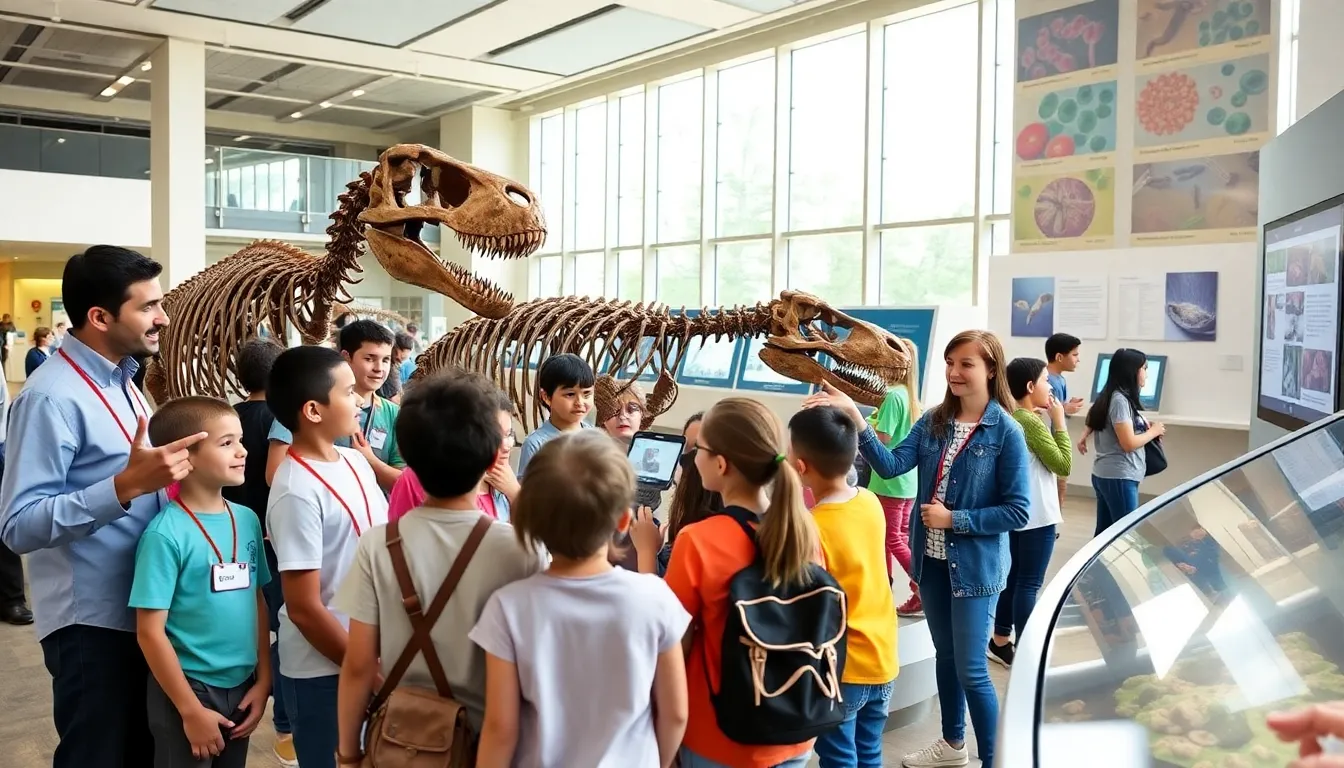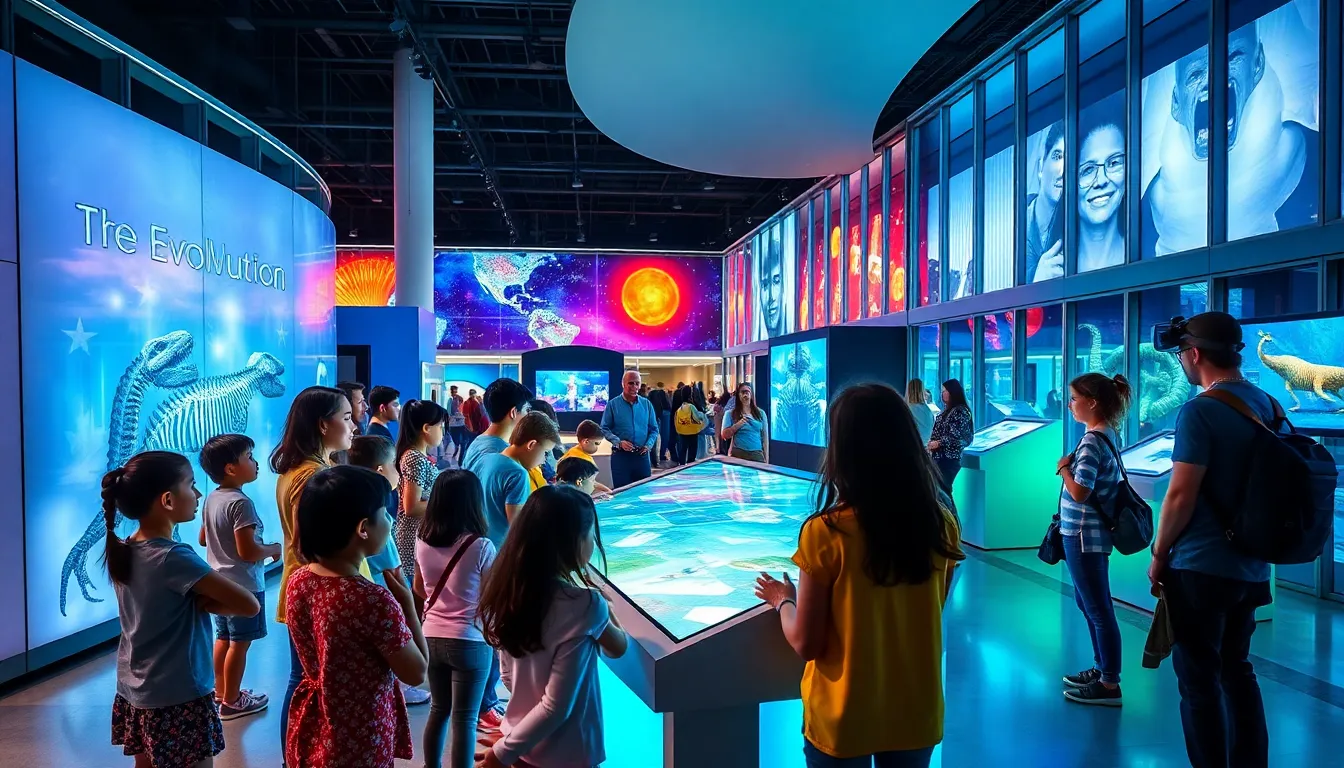Table of Contents
ToggleImagine strolling through a museum filled with exhibits that don’t just tell you about evolution, they make you feel it. Life science museums are the keepers of the secrets of biodiversity and evolution, offering interactive exhibits that engage the curious minds of all ages. In a world where knowledge is at our fingertips, these museums stand out as uniquely immersive experiences. They aren’t just dusty halls filled with skeletons: they are vibrant hubs of discovery and education. So, grab your explorer’s hat, and let’s jump into how life science museums are evolving to keep us in tune with nature’s most fascinating tales.
The Role of Life Science Museums in Education

Life science museums have carved their niche as invaluable educational resources. They provide a platform for learning that transcends traditional textbooks and classrooms. Here, students can connect theory to reality, examining everything from the tiniest microorganism to majestic dinosaurs.
Besides, these institutions spark curiosity in young minds by transforming abstract concepts into tangible experiences. They offer workshops, guided tours, and hands-on activities that encourage interaction. Guided by enthusiastic educators, visitors jump into science in a way that resonates personally. It’s no wonder these museums have become anchor points in many communities, bridging gaps in understanding and inspiring the next generation of scientists.
Also, partnerships with schools have allowed life science museums to design curricula that dovetail with educational standards. By aligning their exhibits with what students learn in school, they become extensions of the classroom, making learning more dynamic and effective.
Highlighting Evolution Through Interactive Exhibits
Today’s life science museums are stepping up their game with hands-on, interactive exhibits that showcase evolution in a captivating way. Gone are the days of mere observation: now, visitors can touch, hear, and even smell the processes that shape life on Earth.
For instance, imagine an exhibit where you can simulate natural selection by tweaking various factors and observing the outcomes in real-time. This kind of engagement leads to a deeper understanding of complex ideas like adaptation and evolutionary biology. Museums are employing technology such as augmented reality and virtual reality to immerse visitors in ancient ecosystems, allowing them to experience evolution firsthand.
Also, traveling exhibits often bring unique themes that shift focus based on contemporary issues, such as climate change or habitat loss, illustrating how these factors influence the evolution of species.
Case Studies of Prominent Life Science Museums
To illustrate the impact of life science museums, let’s look at a few prominent examples. The American Museum of Natural History in New York is a pioneer in evolutionary exhibits. Its Hall of Saurischian Dinosaurs has captivated millions, showcasing a rich tapestry of the evolution of dinosaurs through high-tech displays.
The Field Museum in Chicago offers another exciting case. Home to “Sue,” the most famous T. rex fossil, it provides insights into not just dinosaurs, but the evolutionary processes that led to their existence. Through its advanced storytelling techniques, visitors learn about their diet, habitat, and extinction, connecting prehistoric life to modern-day ecosystems.
Across the ocean, the Natural History Museum in London blends cutting-edge science with historical artifacts. Its Darwin Centre invites guests into the world of research, where real scientists are just steps away, allowing visitors to see how life science research evolves daily.
These museums exemplify how engaging storytelling and advanced science create an immersive educational environment for all.
The Impact of Digital Innovations on Museum Experiences
Technology is redefining how museums operate and educate. Through digital innovations, life science museums are reaching new audiences and enhancing visitor experiences. For example, mobile apps allow guests to curate their own museum tours, facilitating personalized exploration.
Interactive touch screens provide additional layers of information about exhibits. This shift creates an adaptable learning environment where visitors can choose what they want to know more about, reinforcing their interests. Museums are investing in gamification, too: these interactive games draw visitors into evolutionary narratives, making learning both fun and impactful.
As vital as these technologies are, many museums also focus on their online presence. Virtual tours and online courses open their educational offerings to anyone, anywhere, a lifeline for those unable to visit in person.
Challenges Facing Life Science Museums
Even though their many strides, life science museums face several challenges today. Funding is a significant concern, as many rely heavily on grants and donations. Economic downturns can significantly impact their operational budgets. Without sufficient financial support, museums struggle to maintain and update exhibits, limiting their effectiveness as educational tools.
Also, keeping pace with technological advancements presents another hurdle. The digital landscape evolves quickly, and staying up-to-date is essential for engaging visitors effectively. Museums must invest not just in the latest tech, but also in training staff to use it effectively.
Finally, the ongoing threat of misinformation poses a challenge. Life science museums have a crucial role in combatting false narratives, particularly about evolution and climate change. They must design exhibits that not only inform but also empower visitors to critically analyze information.
Future Trends in Life Science Museums
Looking toward the future, a few trends are emerging that may change the landscape of life science museums. Sustainability is moving to the forefront, with many museums adopting eco-friendly practices in operations and exhibits. This shift not only reduces their environmental impact but also serves as an educational tool for visitors about the importance of conservation.
Besides, collaborative exhibits between various institutions are becoming more common. These partnerships allow for shared resources and ideas, eventually enhancing the visitor experience with richer, more diverse content.
Finally, visitor engagement techniques will continue to evolve. Expect to see more artificial intelligence technologies that personalize the museum experience. Imagine walking into a museum where your digital assistant provides information tailored to your interests: that’s not far off.
These trends promise to make life science museums more relevant and engaging than ever, keeping them aligned with the curiosity of new generations.








